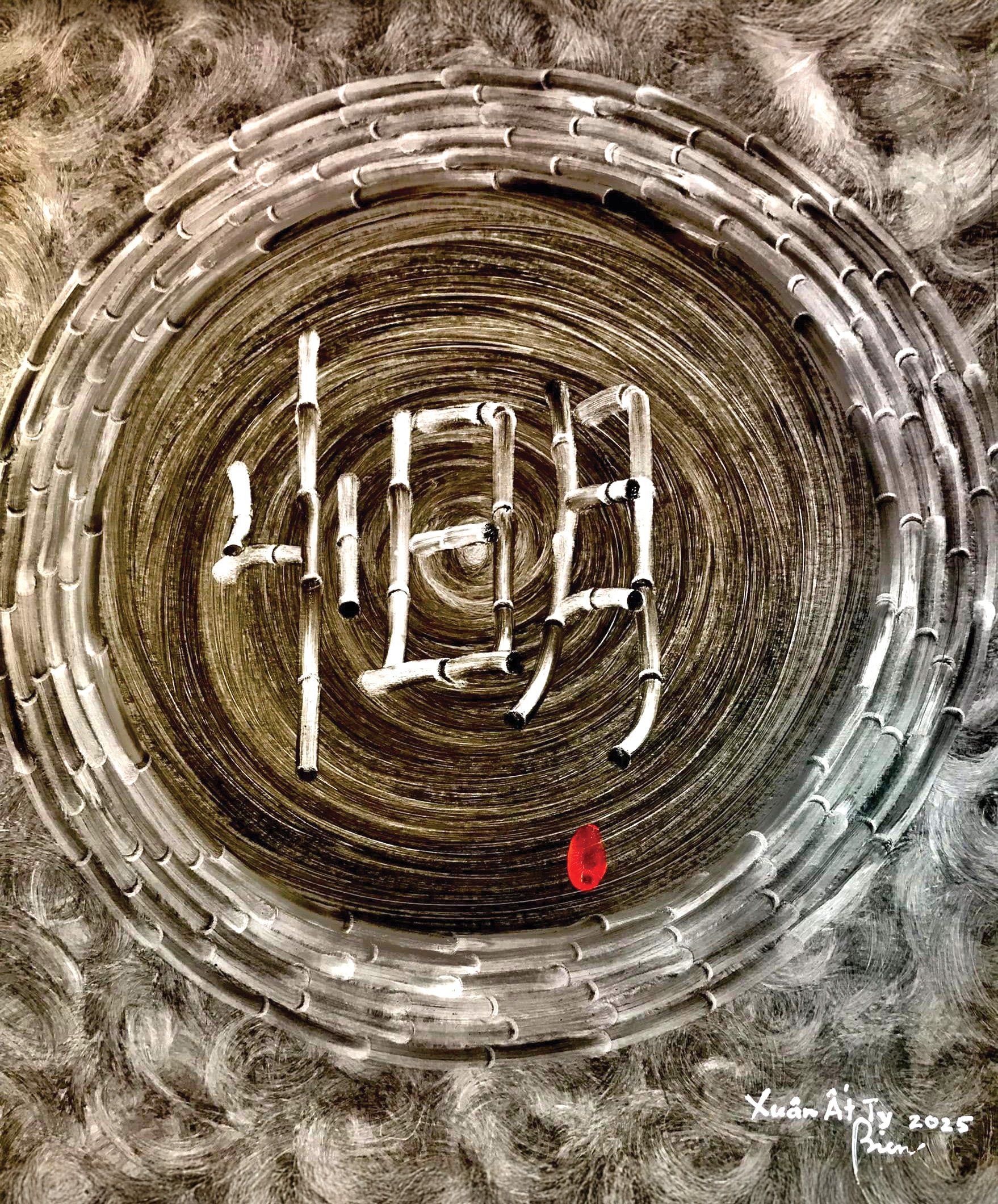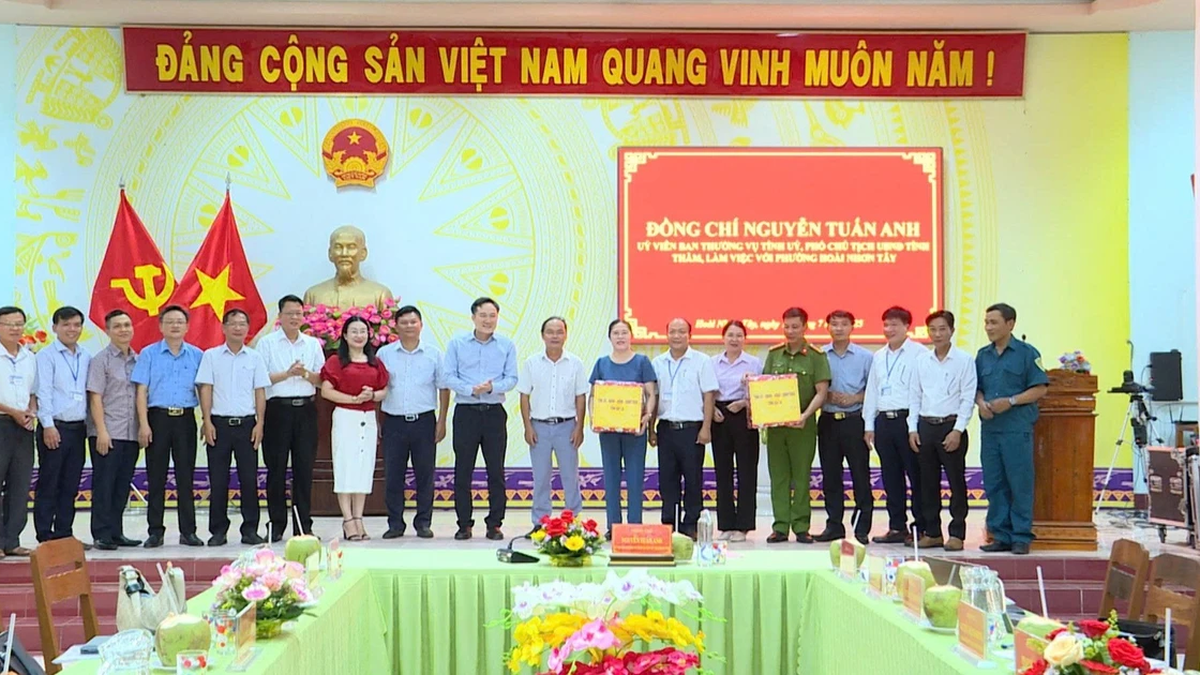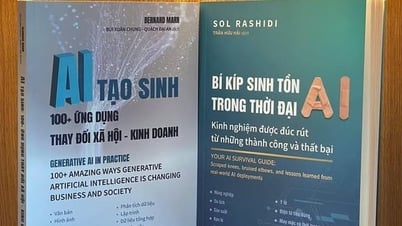 |
| Happy. Ink. Painting by artist Vo Trinh Bien |
As everyone knows, our ancestors wanted to end the borrowing of Chinese characters, so they created a type of writing to record Vietnamese sounds - called Nom characters. Based on Chinese characters, our ancestors used those characters as a prefix to create Nom characters - a phonetic script for Vietnamese. However, because Vietnamese is a polysyllabic language, one Chinese character cannot record all the syllables of Vietnamese, so our ancestors flexibly combined two Chinese characters to create a new Nom character. This new Nom character partly suggests sounds and partly expresses ideas. In addition, in a few cases, our ancestors also used many Chinese characters to represent a Nom sound. Through the above analysis, it has been shown that Nom characters were developed by our ancestors on the basis of Chinese characters. Chinese characters are the outer shell of Nom characters. Nom characters that want to represent the content inside must have an outer shell of Chinese characters. It explains why later generations put Han and Nom in the same set. Because if we remove the Han characters (the outer shell), we cannot see the content inside the Nom characters. In other words, Nom characters cannot exist in meaning without the Han shell to express the meaning on the outside.
Although its development was not yet complete and it still depended on Chinese characters, Nom characters were once recorded in the history of the Southern country as the National language - the language of the Southern country, a position that Chinese characters had never achieved in our country. Nom literature and poetry also proved to be superior to Chinese literature and poetry. Nom literature has recorded a number of outstanding authors such as Nguyen Trai, Nguyen Binh Khiem, Doan Thi Diem, Nguyen Gia Thieu, Nguyen Du, Ho Xuan Huong..., with many great works: National language poetry collection by Nguyen Trai, Bach Van Quoc Ngu poetry collection by Nguyen Binh Khiem, Chinh Phu Ngam by Doan Thi Diem (translated), Cung Oan Ngam Khuc by Nguyen Gia Thieu, Truyen Kieu by Nguyen Du, Xuan Huong poetry collection by Ho Xuan Huong...
The brilliant development of Nom literature and poetry in both ideological content and artistic value is a powerful expression of national pride, the clearest proof of our ancestors' aspiration to build an independent culture. "The words of our country's language", through the above-mentioned Nom poetry masterpieces, have been highly respected by the literati of the South. It is no longer a "Nom na mách que" script, a "no one looks at" script, Nom script has become a means of literary creation. Many Nom literature and poetry works have reached the pinnacle of linguistic art, the pride of the national literature.
Fully aware of the parallelism between Han and Nom, painter Vo Trinh Bien in Da Lat expressed his love for "the words of the Southern language" by... transforming Nom words into magical, talented artistic paintings. On a large-size roki paper, with just his fingertips and Chinese ink, word paintings appear one after another, full of charm. This is the word "mother" consisting of the "female" and "beautiful" parts. "Mother" in Nom is an ideographic word, with the meaning of "mother" being a beautiful woman. That is the word "love". Our ancestors used the word "weak" on top with the hidden sub-meaning part and the word "female" below to express the word "love". "Love" in Nom is both harmonious and ideographic. "Love" is the feeling that women hide in their hearts. Our ancestors also created the word "mung" with many meanings. “Mung” consists of the radical “tam” and the word “minh” (bright), meaning that whoever has a pure heart is happy. Whoever has a bright heart is happy. A country with a wise king is happy...
According to artist Vo Trinh Bien, drawing individual Nom characters as mentioned above is a rehearsal for a long-term project in the near future: drawing the book Truyen Kieu - the masterpiece of the great poet Nguyen Du. Truyen Kieu is a poetic work in Nom script consisting of 3,254 six-eight verses, not only the "Book of Poetry" of the Vietnamese people, but also an affirmation of the Vietnamese ethnic characteristics of the Great Poet Nguyen Du towards the Nom script heritage - the script that expresses the aspiration for language autonomy of our ancestors. Through Nom script, our ancestors once again affirmed that this is the script of the Southern language, this is the wisdom of the Vietnamese people.
Source: https://baolamdong.vn/van-hoa-nghe-thuat/202505/them-cach-ton-vinh-chu-nom-72b0af9/




















































![[Maritime News] More than 80% of global container shipping capacity is in the hands of MSC and major shipping alliances](https://vphoto.vietnam.vn/thumb/402x226/vietnam/resource/IMAGE/2025/7/16/6b4d586c984b4cbf8c5680352b9eaeb0)













































Comment (0)